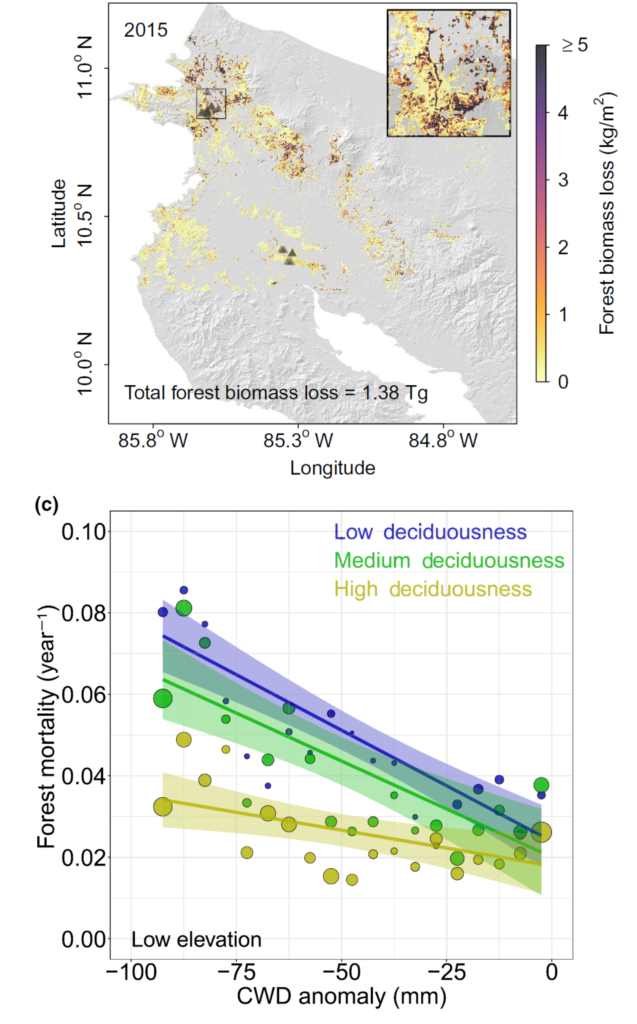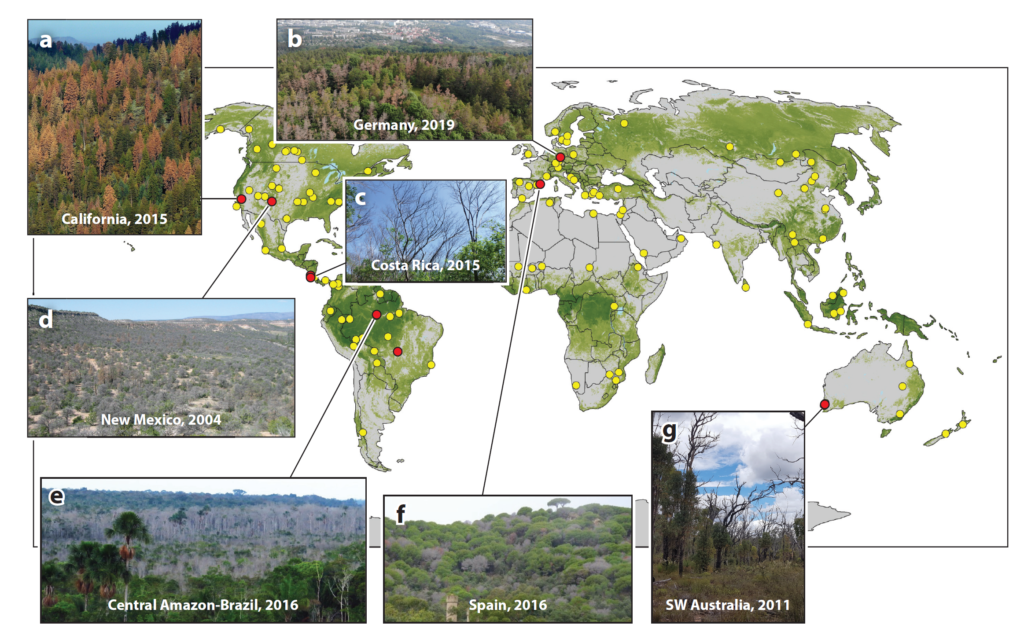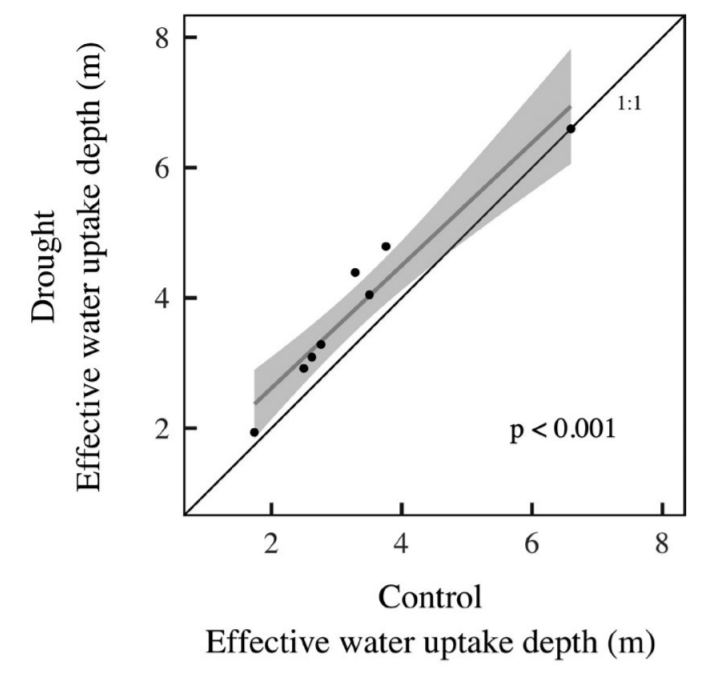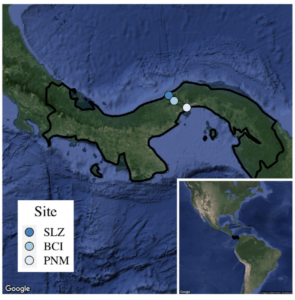Fine-scale remote sensing unveils drivers and mechanisms of drought-induced mortality
The Science
We utilized Landsat Enhanced Vegetation Index (EVI), an indicator of vegetation function and resilience, to investigate the controls over forest mortality in the dry-tropical region of Costa Rica. The EVI based estimates of mortality correlated well with in-situ, ground-based inventories, leading to robust prediction capacity. We observed significant fine-scale heterogeneity in forest mortality that was related primarily to the degree of cumulative water deficit during the drought, leaf deciduousness, and topography.
The Impact
This work is important for improving our fundamental understanding, observational capacity, and predictive certainty for dry-tropical forest vegetation dynamics. Understanding the controls over mortality is greatly enhanced by this remote sensing approach in which fine-scale patterns can be detected and related to key abiotic drivers. Improving our ability to map forest mortality at the global scale is one of the grand challenges in the forest mortality community, and our approach greatly improves the utility of Landsat measurements for this purpose. Scientists can now use this dataset or future datasets based on this approach to benchmark model performance.
Summary
Remote sensing provides a powerful approach to quantify changes in vegetation on the Earth’s surface. We used Landsat 30x30m resolution imagery to quantify changes in vegetation biomass due to mortality during a severe drought in 2015 in the dry-tropical forests of Costa Rica. After strong validation with in-situ ground inventories of tree mortality, we applied the approach to examine the local drivers of mortality. The degree of drought played a strong role in localized mortality. Ecosystems with a higher fraction of evergreen tree species experienced greater mortality than those with a higher abundance of deciduous species. Topographic position also played a significant role, with sun-exposed and steep slopes having the highest mortality.

Contact
Nate McDowell, Pacific Northwest National Laboratory, nate.mcdowell@pnnl.gov
Funding
We thank funding from Cornell University CALS to X. X., National Science Foundation CAREER grant DEB-1053237 to J.S.P. and U.S. Department of Energy, Office of Science, Terrestrial Ecosystem Science Program, Award DE-SC0014363 for funding the field plots. We thank Roger Blanco and Maria Marta Chavarria for logistical help in the field. N.G.M. was supported by the U.S. Department of Energy’s Next Generation Ecosystem Experiment-Tropics project. A.S-A is supported by National Science and Engineering Research Council of Canada (NSERC) –Discovery Grant Program.
Publications
Wu, D., Vargas, G.G., Powers, J.S., McDowell, N.G., Becknell, J.M., Pérez‐Aviles, D., Medvigy, D., Liu, Y., Katul, G.G., Calvo‐Alvarado, J.C. and Calvo‐Obando, A., 2021. Reduced ecosystem resilience quantifies fine‐scale heterogeneity in tropical forest mortality responses to drought. Global Change Biology. https://doi.org/10.1111/gcb.16046




